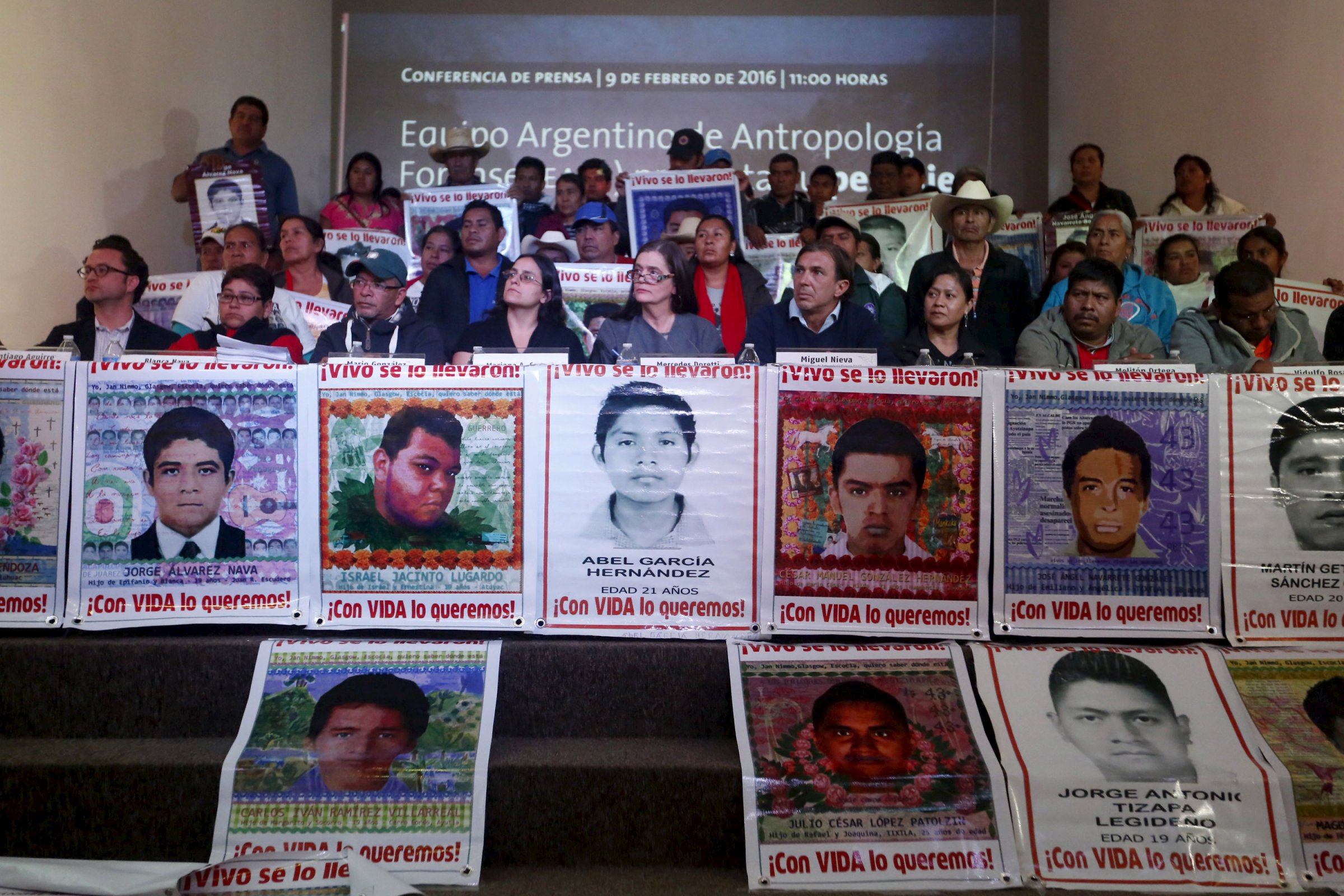
Forensic scientists from Argentina are challenging the official account of what happened to the 43 Mexican students who disappeared from the southern state of Guerrero in 2014, the BBC reports.
Mexico’s government has maintained that the students were arrested by local police who then transferred them to a local gang that murdered them and burned beyond recognition at a garbage dump on the outskirts of the town of Cocula.
After a yearlong investigation, however, the Argentine Forensic Anthropology Team found no DNA belonging to the students at the site. They said that recent fires at the dump had not been extreme enough to completely destroy 43 bodies.
This is the latest development in a case that has churned controversy in Mexico in the last year and a half. Many in the country have protested against a perceived lack of transparency in the handling of the case by the government of President Enrique Peña Nieto.
[BBC]
More Must-Reads from TIME
- Inside Elon Musk’s War on Washington
- Why Do More Young Adults Have Cancer?
- Colman Domingo Leads With Radical Love
- 11 New Books to Read in February
- How to Get Better at Doing Things Alone
- Cecily Strong on Goober the Clown
- Column: The Rise of America’s Broligarchy
- Introducing the 2025 Closers
Contact us at letters@time.com